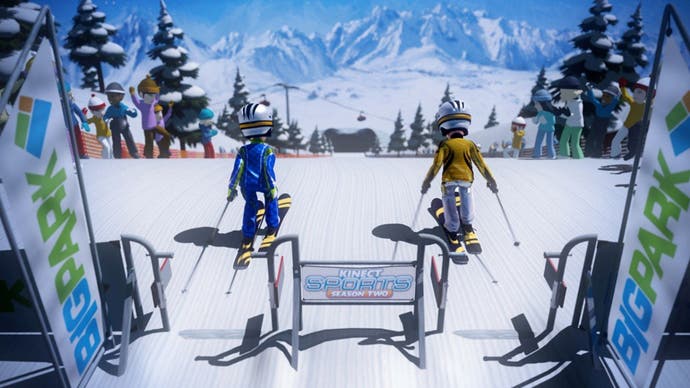A Rare view of the future of Kinect
Scott Henson reveals Microsoft's motion-sensing strategy.
No, I don't get sick of it at all. One of the great things about Rare is it's got this great heritage and history people have passion around. I grew up on Rare games. I would like for people to really understand our future is bolstered by the history we have, but we're buoyed by the innovation that's ahead of us.
It's interesting when people ask questions like, well, will you do this kind of game or that kind of game? Some of those things I find limiting in terms of what the experience is. If you go talk to just an average person about what we've done with Kinect or Kinect Sports, honestly, it's magic to them.
They cannot get their head around the idea they're moving and then there's an avatar on the screen doing the exact same thing. Turn that into a sport and a whole bunch of activities with skill ranges and refined movement and big movements and it's an incredible thing.
Hopefully people get as excited about that as we do. We know there are millions of customers out there that are getting excited about it.
Sports is a great category, too. We all went to the schoolyard and played dodgeball or tetherball or whatever. We all have some general notion of sports. Literally every sport that's in Season Two, I played them all growing up. So I have a passion for the sports side. For me it's like this dream job.
When I get questions like that, hopefully people get the sense what really excites me is what we're doing now and how we're driving and leading innovation.
Yes. [Sports] has got to be one of the most accessible and evergreen categories in entertainment. You could make the definitive statement it's the most accessible category in entertainment. If you think about the number of people that engage in sports, it's the majority of the planet. The Premier League has two billion people who in some way, shape or form tune in. So then you have two billion people who have a general notion of what football is. That's a pretty cool basis to start an experience on. That fuels and motivates us as well.

There may be dogs and cats and coffee tables. There may be big living rooms and small living rooms. They may be arranged in all kinds of different ways. How do we adapt to that? That's the challenge we have. And how do we do that in a way through the power of the software, we're subtly communicating to the user, OK, this is where you need to be, but we're not doing it in an obtrusive way.
Every canvas has its borders. We just work with those borders in a way that keeps people immersed in the experience but lives within the realities and constraints of whatever might be someone's living room or situation.
This is where software comes into play. We look at all kinds of things, from clothing type to lighting type, to, OK, if there was a coffee table cutting off the bottom half of my play while I'm running, what do I do? Can we still make that work and be great?
The sales have been really good. Our customer satisfaction numbers are incredible. Thumbs up.
It comes down to what the activity is and how much space you need. If you think about darts, we only need about a foot to play that sport. Tennis is very different than darts. It's about making it feel like tennis. You do drop shots and cross-court shots. It's not a play space constraint, per se. It's really adapting to what the expectations would be around the experience you're trying to create.
Yeah. If you're just doing this [moves hand close to chest], that doesn't feel like tennis. We could do that by the way. We kind of did that with table tennis. We kept the experience right here to make it feel like there is a table in front of you while you were playing. But we still pushed you a bit in table tennis. But most of that experience was right here, just side to side.
